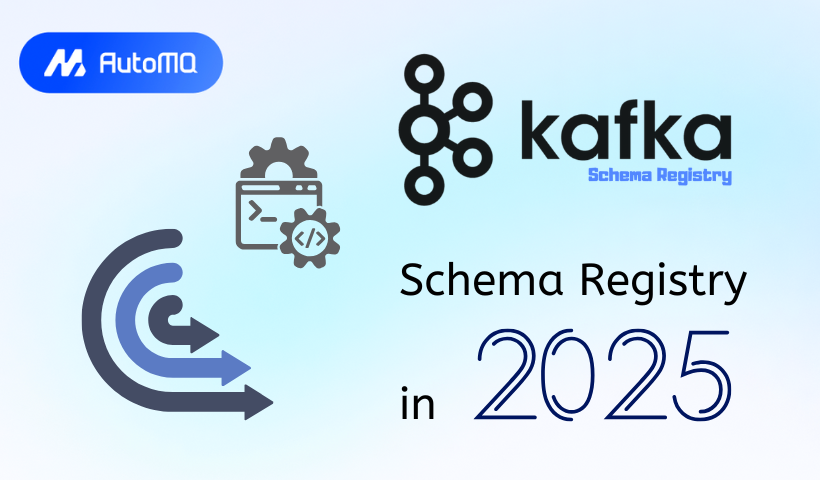Introduction
In the world of data streaming with Apache Kafka, maintaining data quality and ensuring seamless communication between services is paramount. As systems evolve, the structure of the data they exchange—their schema—inevitably changes. Without a governing mechanism, these changes can lead to catastrophic failures, where producer applications start sending data that downstream consumers can no longer understand. This is where a Schema Registry becomes one of the most critical components of your streaming architecture.
This blog post will guide you through the landscape of Kafka Schema Registry solutions available in 2025. We will explore the design, features, pros, and cons of the leading contenders to provide you with a robust framework for choosing the one that best fits your technical and business needs.
The Core Problem: Why You Need a Schema Registry
At its core, a Schema Registry enforces a "data contract" between producers and consumers. It is a centralized repository for your schemas, acting as the single source of truth for the structure of your messages [1]. Here’s why this is non-negotiable for any serious Kafka deployment:
Prevents "Poison Pill" Messages: It stops producers from sending data in a format that consumers cannot process, which would otherwise cause consumers to fail, halt processing, or crash.
Enables Safe Schema Evolution: Data formats are not static. You might need to add a new field or remove an old one. A Schema Registry manages this evolution by enforcing compatibility rules, ensuring that changes don't break existing applications [2].
Improves Data Governance and Quality: By providing a central place to manage and audit schemas, it enhances data governance. You know exactly what data is flowing through your systems, who owns it, and how it has changed over time.
Increases Performance: Instead of sending the full (and often verbose) schema with every message, producers send a much smaller schema ID. Consumers can then fetch the full schema from the registry once and cache it, significantly reducing message size and network overhead [3].
Before we compare the solutions, let's quickly recap the essential concepts.
Key Concepts Revisited
Schema Formats: The most common formats are Apache Avro, a binary format with rich schema evolution capabilities; Protobuf (Protocol Buffers), Google's high-performance binary format; and JSON Schema, which provides validation for JSON documents.
Compatibility Types: These are rules that govern schema evolution. The most common are:
BACKWARD: Consumers using the new schema can read data produced with the old schema. (Allows deleting fields, adding optional fields). This is the most common and often default setting.FORWARD: Consumers using an old schema can read data produced with the new schema. (Allows adding fields, deleting optional fields).FULL: The new schema is both backward and forward compatible.NONE: No compatibility checks are performed. Transitive versions of these rules (e.g.,BACKWARD_TRANSITIVE) check compatibility against all previous versions, not just the last one [4].
Subjects: A subject is a named scope under which schemas are versioned. The default strategy is to name the subject after the Kafka topic (e.g.,
my-topic-value).
![Confluent Schema Registry for storing and retrieving schemas [16]](https://static-file-demo.automq.com/6809c9c3aaa66b13a5498262/69099d3125f312f79162775b_67480fef30f9df5f84f31d36%252F685e62e66af15227ba5aecb6_OIFa.png)
The Contenders: A Deep Dive into Schema Registry Solutions
Let's analyze the leading Schema Registry implementations, each with a distinct architectural philosophy and feature set.
Confluent Schema Registry
As the original creators of Apache Kafka, Confluent's Schema Registry is the most established and feature-rich solution on the market.
Design and Architecture:
- Confluent Schema Registry is a standalone service that runs separately from your Kafka brokers. It uses a Kafka topic as a durable and replicated backend to store all schema information, which makes the registry itself horizontally scalable and highly available. It operates with a single-primary architecture, where one node is elected as the primary to handle all write operations, while all nodes can serve read requests [5].
Key Features:
- It supports Avro, Protobuf, and JSON Schema and provides a rich set of features including advanced compatibility modes, schema normalization, and a RESTful API for management. Its enterprise offerings include powerful tools like Schema Linking, which allows you to replicate schemas between different registries (e.g., from a development to a production environment), and Schema Contexts, which enable logical sub-registries for better multi-tenancy [6, 7].
Pros:
Rich Feature Set: Unmatched in terms of advanced features for enterprise governance and multi-environment workflows.
Ecosystem Integration: Deeply integrated with the Confluent Platform, including Kafka Connect, ksqlDB, and Confluent Control Center [8].
Mature and Stable: Battle-tested and widely adopted, with extensive documentation and community support.
Cons:
Operational Complexity: Being a separate component, it requires its own deployment, management, and monitoring, which adds to the operational overhead of your Kafka cluster.
Cost: While the community edition is free, many of the advanced features and enterprise support are part of a paid Confluent Platform subscription.
AWS Glue Schema Registry
For organizations deeply embedded in the Amazon Web Services (AWS) ecosystem, the AWS Glue Schema Registry is a compelling, cloud-native option.
Design and Architecture:
- Glue Schema Registry is a fully managed, serverless component of the AWS Glue data integration service. There are no servers to manage, patch, or scale. Schemas are stored durably within the AWS ecosystem, encrypted at rest, and accessed via HTTPS endpoints. It relies heavily on AWS Identity and Access Management (IAM) for authentication and authorization [9].
Key Features:
- It supports Avro, Protobuf, and JSON Schema and provides eight compatibility modes, including transitive options (e.g., BACKWARD_ALL). It integrates seamlessly with other AWS services like Amazon MSK (Managed Streaming for Kafka), Kinesis Data Streams, AWS Lambda, and AWS Glue's own ETL jobs [10]. It also offers client-side libraries for Java applications that handle caching and SerDe (Serialization/Deserialization) logic.
Pros:
Zero Operational Overhead: As a serverless offering, it completely removes the burden of managing infrastructure.
Pay-as-you-go Pricing: There is no additional charge for the Schema Registry itself; you pay for the storage and requests to the underlying AWS Glue Data Catalog beyond the free tier, making it very cost-effective [11].
Deep AWS Integration: The native integration with IAM for security and other AWS streaming services is a major advantage for those already on AWS.
Cons:
Vendor Lock-in: It is an AWS-specific solution. Migrating away from it to another cloud or on-premise would require significant effort.
Fewer Advanced Features: It lacks some of the advanced enterprise governance features found in Confluent's offering, such as Schema Linking.
Configuration in an Ecosystem: While powerful, its configuration is tied into the broader AWS Glue and IAM ecosystems, which can have a steeper learning curve for those unfamiliar with AWS.
Redpanda Schema Registry
Redpanda offers a unique take on the Schema Registry by building it directly into its Kafka-compatible streaming platform.
Design and Architecture:
- The Schema Registry is not a separate service but an integrated component of every Redpanda broker. It is API-compatible with the Confluent Schema Registry, meaning you can use existing Kafka clients and tools. Schemas are stored in an internal, compacted Kafka topic, leveraging Redpanda's underlying Raft-based replication for high availability. Any Redpanda broker can handle schema read and write requests, simplifying the client-side configuration.
Key Features:
- It offers compatibility with Avro, Protobuf, and JSON Schema, supports standard compatibility checks, and can be managed via a REST API or the Redpanda Console. Its key feature is its seamless, integrated nature. It also provides a READONLY mode that can be useful for disaster recovery scenarios [12].
Pros:
Simplified Operations: Eliminates the need to deploy, manage, and secure a separate schema registry cluster, significantly reducing operational complexity.
High Performance: By co-locating the registry with the broker and being built in C++, it can offer lower latency for schema lookups.
Kafka API Compatibility: Works out-of-the-box with standard Kafka ecosystem tools and clients that are designed to work with the Confluent Schema Registry API.
Cons:
Tied to Redpanda: It is a feature of the Redpanda platform, so adopting it means adopting Redpanda as your streaming platform.
Emerging Feature Set: While the core functionality is robust, it may not have the extensive history or some of the more niche, enterprise-grade features of the Confluent registry.
Apicurio Registry
Apicurio Registry is a popular open-source option that stands out for its flexibility and broad support for different types of schemas and APIs.
Design and Architecture:
- Apicurio is a standalone registry with a highly pluggable storage architecture. It can be configured to store schemas in-memory (for development), in a PostgreSQL database, or using a Kafka topic with its "KafkaSQL" storage option. This flexibility allows you to choose the storage backend that best fits your operational capabilities and requirements [13].
Key Features:
- Beyond standard Kafka schema formats, Apicurio also supports a wide range of other schema and API specification types, including OpenAPI, AsyncAPI, GraphQL, WSDL, and XML Schema. It provides a web console, robust content validation and evolution rules, and is compatible with the Confluent Schema Registry SerDe format. It can be deployed in various ways, including as a Docker container or on Kubernetes via an Operator [14].
Pros:
Format and Storage Flexibility: Its support for numerous schema/API types and pluggable storage is its biggest differentiator.
Fully Open Source: It is a community-driven project under the CNCF, offering a powerful feature set without licensing costs.
Content Governance: Provides strong rules to govern the content and structure of schemas.
Cons:
Requires Self-Management: As a self-hosted solution, you are responsible for its deployment, high availability, monitoring, and backups.
Potential Complexity: The flexibility in storage options also means more complex deployment decisions. For example, using KafkaSQL can increase startup times compared to a traditional SQL database [15].
Making the Right Choice: A Decision Framework
Choosing a schema registry isn't just a technical decision; it's an architectural one that depends on your team's skills, your company's cloud strategy, and your budget. Ask yourself these questions:
Where is your data infrastructure hosted?
All-in on AWS: AWS Glue Schema Registry is the natural choice. Its serverless nature and deep integration with services like MSK, Kinesis, and IAM are hard to beat.
On-Premise or Multi-Cloud: Confluent Schema Registry or Apicurio are your primary options.
Using Redpanda: If you've already chosen Redpanda, its integrated Schema Registry is the obvious and most operationally simple choice.
What is your operational maturity and team size?
Prefer Managed Services: If you want to minimize operational overhead, the serverless AWS Glue Schema Registry or a managed offering of Confluent Cloud Schema Registry is ideal.
Comfortable with Self-Hosting: If you have a platform or SRE team, self-hosting Confluent Schema Registry or Apicurio gives you more control.
What is your budget?
Cost-conscious/Open-Source-first: Apicurio is a powerful, free open-source solution. The community edition of Confluent Schema Registry is also free.
Willing to Pay for Enterprise Features: A Confluent Platform subscription is a worthwhile investment for advanced governance, security, and support.
Cloud-Native & Pay-as-you-go: AWS Glue Schema Registry has a very attractive pricing model.
How important is vendor neutrality and format support?
High Priority on Neutrality:Apicurio provides the most flexibility and avoids vendor lock-in.
Need More than Kafka Schemas: If you need to manage OpenAPI or AsyncAPI specs alongside your Kafka schemas, Apicurio is the clear winner.
Low Priority on Neutrality: If you are committed to a specific ecosystem like AWS or Confluent, leveraging their native registries is more efficient.
Scenarios and Recommendations
To make this more concrete, let's consider a few common scenarios:
Scenario 1: The "All-in on AWS" Enterprise.
- Your company's entire infrastructure lives on AWS. You use Amazon MSK for Kafka and other services like Lambda and Kinesis. AWS Glue Schema Registry is the best fit. The operational simplicity of a serverless tool, combined with native IAM security and a pay-as-you-go model, makes it a seamless extension of your existing cloud environment.
Scenario 2: The Multi-Cloud or Regulated On-Premise Enterprise.
- You operate in a hybrid environment, with data centers on-premise and workloads in multiple clouds. Data governance and security are top priorities. Confluent Schema Registry is your strongest candidate. Its robust feature set, including Schema Linking for cross-environment consistency and dedicated enterprise support, is designed for these complex, high-stakes deployments.
Scenario 3: The Lean, Operationally-Focused Team.
- You're a small, agile team, or a larger organization focused on developer productivity and minimizing operational toil. You value performance and simplicity. If you're open to an alternative streaming platform, Redpanda with its integrated Schema Registry is an excellent choice. It drastically simplifies your architecture by removing an entire service tier that you would otherwise have to manage.
Scenario 4: The Open-Source Purist or API-Centric Organization.
- Your organization has a strong commitment to open-source software and needs to manage a variety of event and API specifications, not just Kafka schemas. Apicurio Registry is tailor-made for you. Its ability to handle OpenAPI and AsyncAPI specs, coupled with its flexible, non-proprietary storage options, gives you maximum control and future-proofs your architecture against vendor lock-in.
Conclusion
The Kafka Schema Registry is an essential pillar of a robust and scalable streaming architecture. In 2025, the ecosystem offers a range of mature solutions catering to different needs.
For enterprises seeking the most advanced governance features, Confluent Schema Registry remains the gold standard.
For teams building on AWS, the serverless AWS Glue Schema Registry is a nearly unbeatable choice.
For those prioritizing operational simplicity, Redpanda's integrated approach is incredibly compelling.
And for organizations that value open-source flexibility, Apicurio Registry offers a powerful, self-hosted alternative.
The right choice depends on a thoughtful evaluation of your technical requirements, operational capacity, and strategic goals. By understanding the design and trade-offs of each solution, you can select a schema registry that will not only prevent data chaos but also serve as a foundation for clean, reliable, and evolvable data streams for years to come.
If you find this content helpful, you might also be interested in our product AutoMQ. AutoMQ is a cloud-native alternative to Kafka by decoupling durability to S3 and EBS. 10x Cost-Effective. No Cross-AZ Traffic Cost. Autoscale in seconds. Single-digit ms latency. AutoMQ now is source code available on github. Big Companies Worldwide are Using AutoMQ. Check the following case studies to learn more:
Grab: Driving Efficiency with AutoMQ in DataStreaming Platform
Palmpay Uses AutoMQ to Replace Kafka, Optimizing Costs by 50%+
How Asia’s Quora Zhihu uses AutoMQ to reduce Kafka cost and maintenance complexity
XPENG Motors Reduces Costs by 50%+ by Replacing Kafka with AutoMQ
Asia's GOAT, Poizon uses AutoMQ Kafka to build observability platform for massive data(30 GB/s)
AutoMQ Helps CaoCao Mobility Address Kafka Scalability During Holidays
JD.comx AutoMQ x CubeFS: A Cost-Effective Journey at Trillion-Scale Kafka Messaging
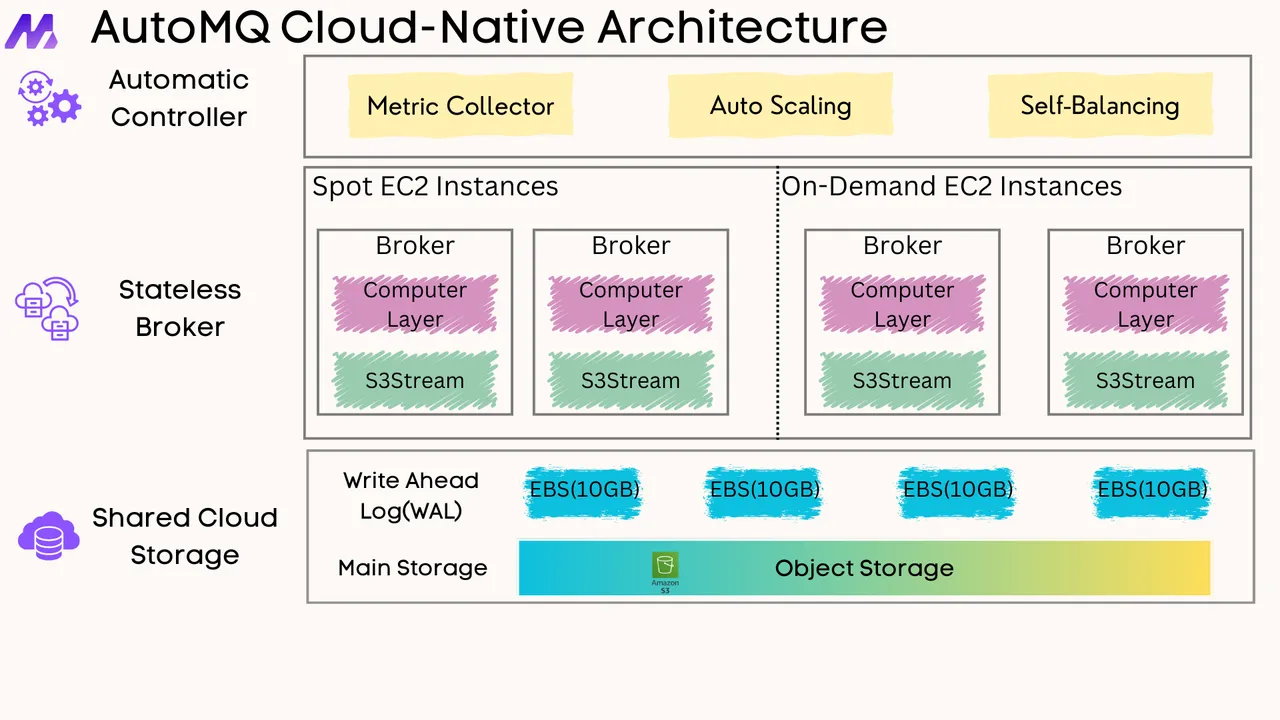





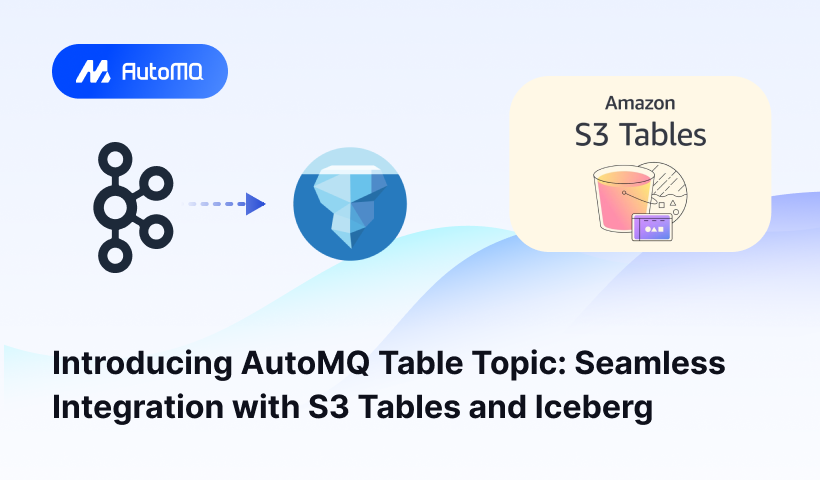
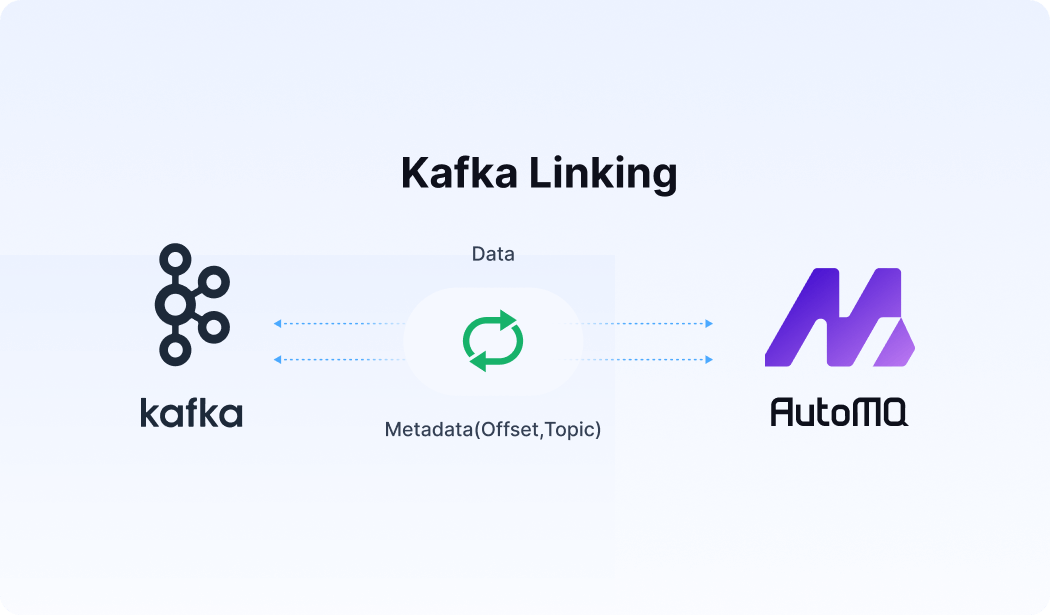




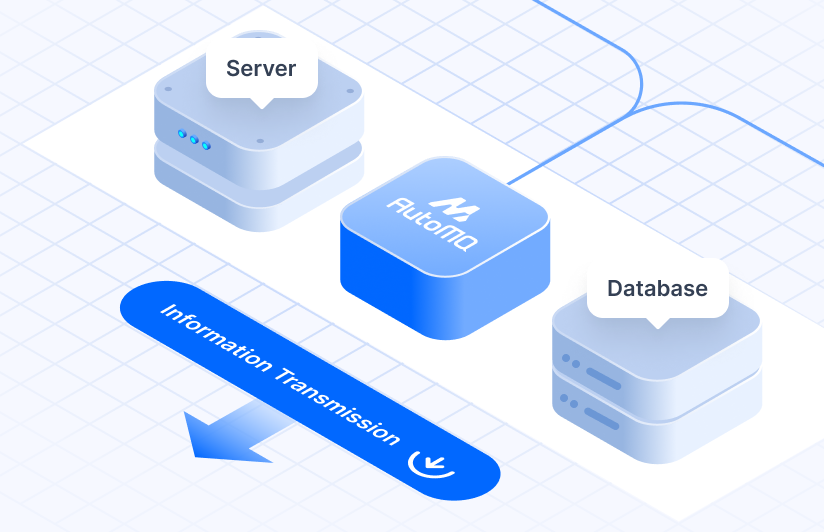



.png)
